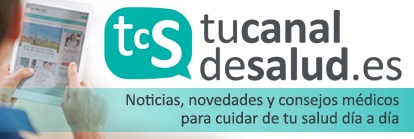Genética
Test prenatal no invasivo
¿A quién va dirigido?
A todas las mujeres embarazadas con al menos 10 semanas de edad gestacional (10s+0d), pudiendo hacerse en las siguientes situaciones: embarazo único o gemelar (1 o 2 fetos) resultante de una concepción natural o de una fecundación in vitro (FIV), incluyendo los embarazos mediante la donación de gametos. Las pacientes con más de dos fetos no pueden realizar el test. Esta prueba puede usarse en embarazos de gemelo evanescente o con reducción embrionaria, aunque en estas situaciones puede haber un mayor riesgo de un resultado falso positivo o falso negativo.
¿En qué consiste?
- El test se realiza mediante una sencilla prueba de sangre (en kit específico) sin riesgo para la madre ni para el bebé.
- Se realiza el análisis mediante NGS del DNA fetal procedente de la placenta. Diferenciar esta fracción de DNA fetal respecto al materno por tamaño y cantidad es un parámetro de calidad diferencial en este tipo de Pruebas No Invasivas.
- Los resultados estarán en 5 días laborables.
¿Por qué es recomendable realizarse el test?
El test permite detectar el riesgo de que el bebé sea portador de una trisomía 13, 18 o 21 (S Patau, S Edwards, S Down), así como el número de cromosomas sexuales X e Y (S Klinefelter, Triple X, S Turner, S doble Y, etc.) y conocer el sexo del bebé. Se ofrece consulta de Consejo Genético, si fuera necesario.
Non-invasive prenatal test
Who is it for?
Pregnant women at least 10 weeks into their pregnancy, carrying either one or two fetuses conceived naturally or following IVF treatment, including pregnancies reached through gamete donation. Patients with three or more fetuses cannot take this test. The test can be used in pregnancies involving intrauterine fetal death or multifetal reduction, although in these circumstances the risk of false-positive or -negative results may be higher.
What does it involve?
- This test requires a simple blood test (using a specific kit for this purpose) and does not place the mother or baby at risk.
- Analysis is performed using next-generation sequencing of fetal DNA obtained from the placenta. Distinguishing fetal DNA from the DNA of the mother is a crucial component of this study and provides added value in this type of noninvasive test.
- Results are available in 5 business days.
Why is it advisable to have this test done?
The test allows your doctor to detect the baby’s risk of being a carrier of trisomy 13, 18, or 21 (Patau syndrome, Edwards syndrome, Down syndrome) and see the number of X and Y chromosomes in its genetic makeup, which makes it possible to screen for Klinefelter syndrome, triple X syndrome, Turner syndrome, XYY syndrome, etc., and also learn the baby’s sex. Where necessary, genetic counseling is available.
Hospital Quirónsalud Marbella
Avda. Severo Ochoa, 22
29603 Marbella Málaga
© 2024 Quirónsalud - Todos los derechos reservados























